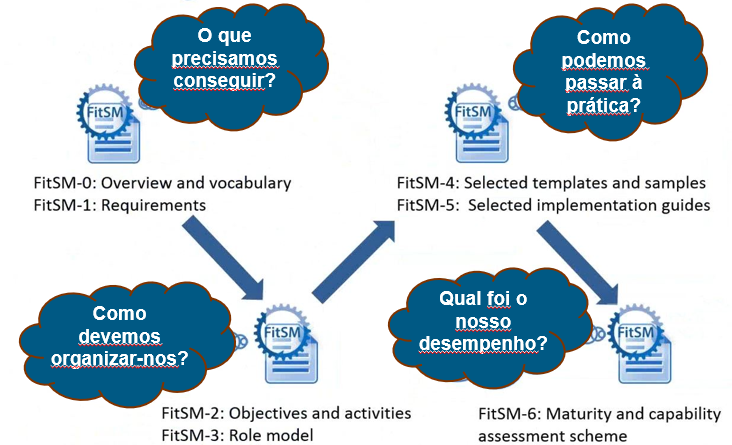ITSM vs ISO/IEC 20000-1 and ITIL
For easier visualization of FitSM's positioning in relation to ISO / IEC 20000-1 and the latest ITIL iterations, see the following table:
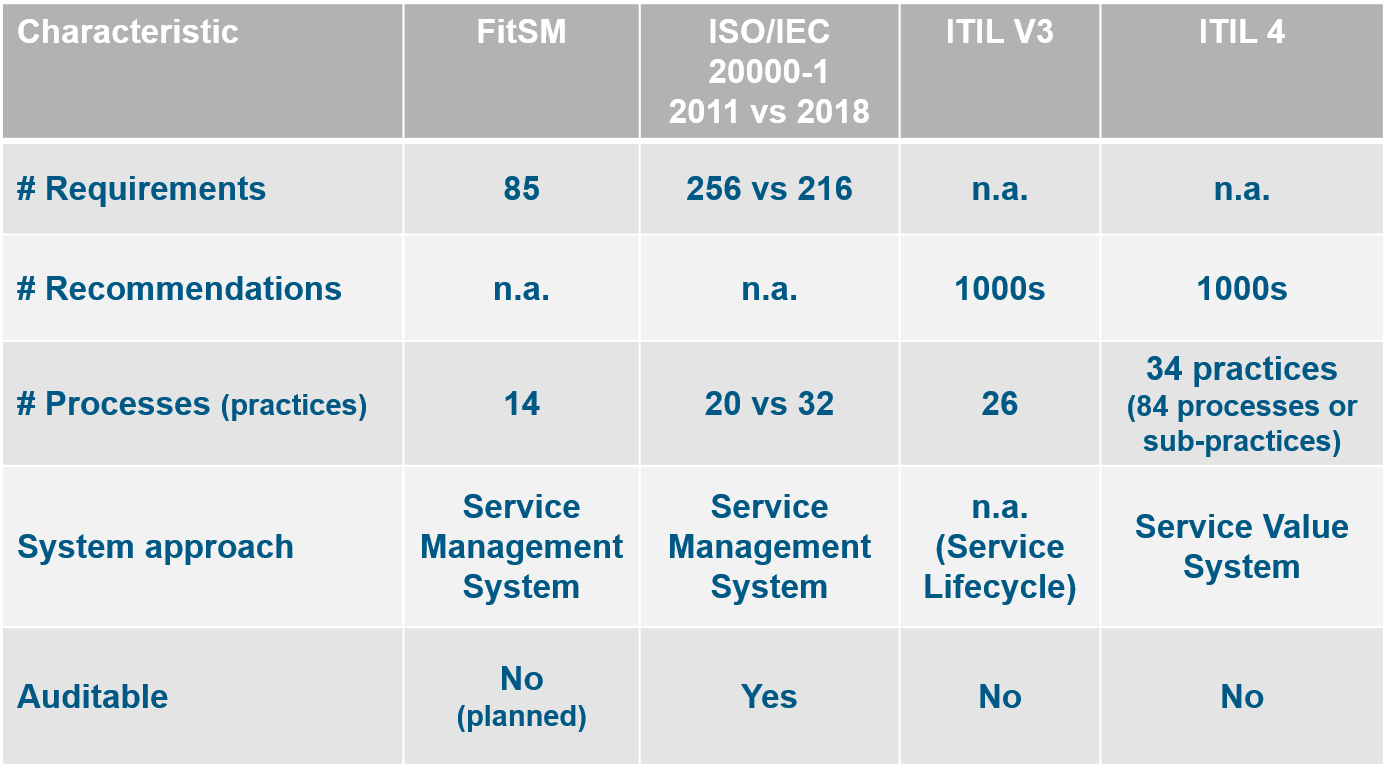
(*) It is expected to be in the future.
The effort required for the alignment effort with each of the standards and framework in the table above can be seen in a simplified way, in the following diagram:
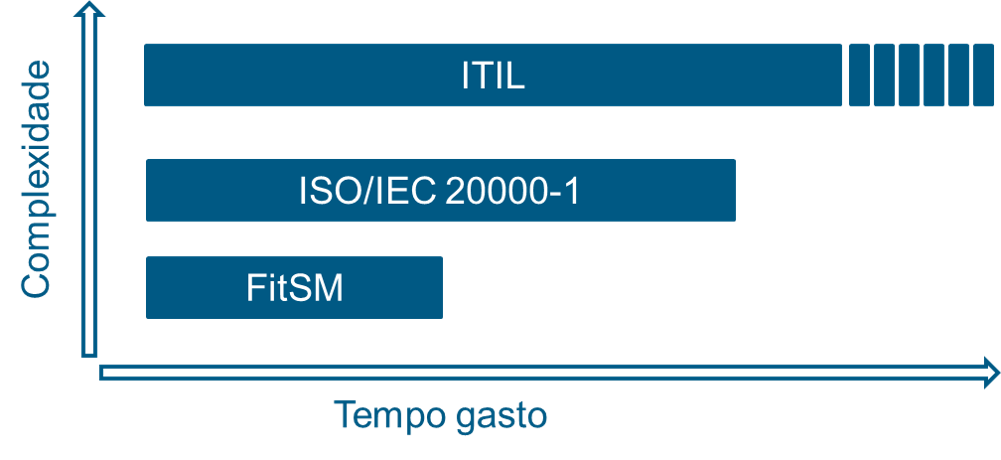
The FitSM training scheme
Qualius is an organization accredited with APMG for FitSM training.
FitSM training consists of the following modules:
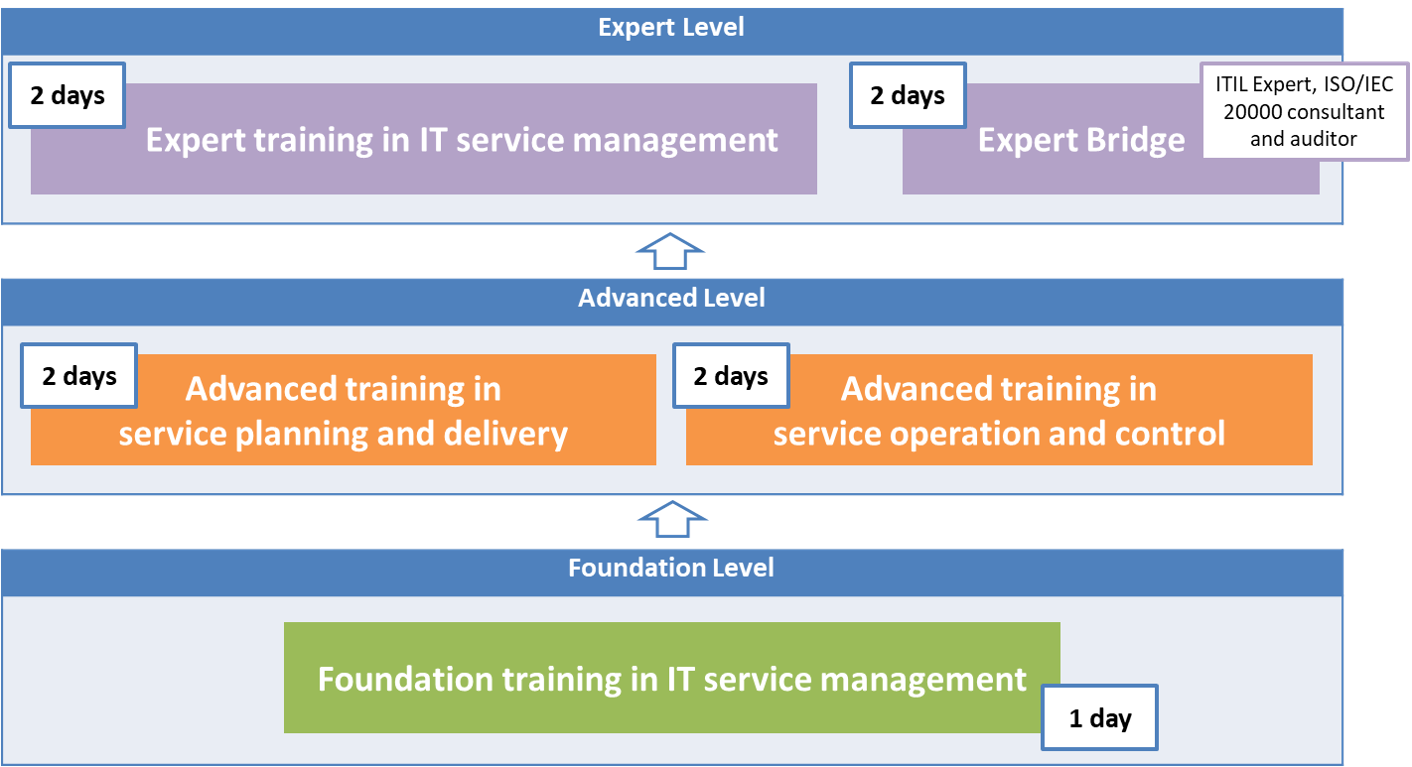
The structure of the FitSM standard
The FitSM standard has the following components:
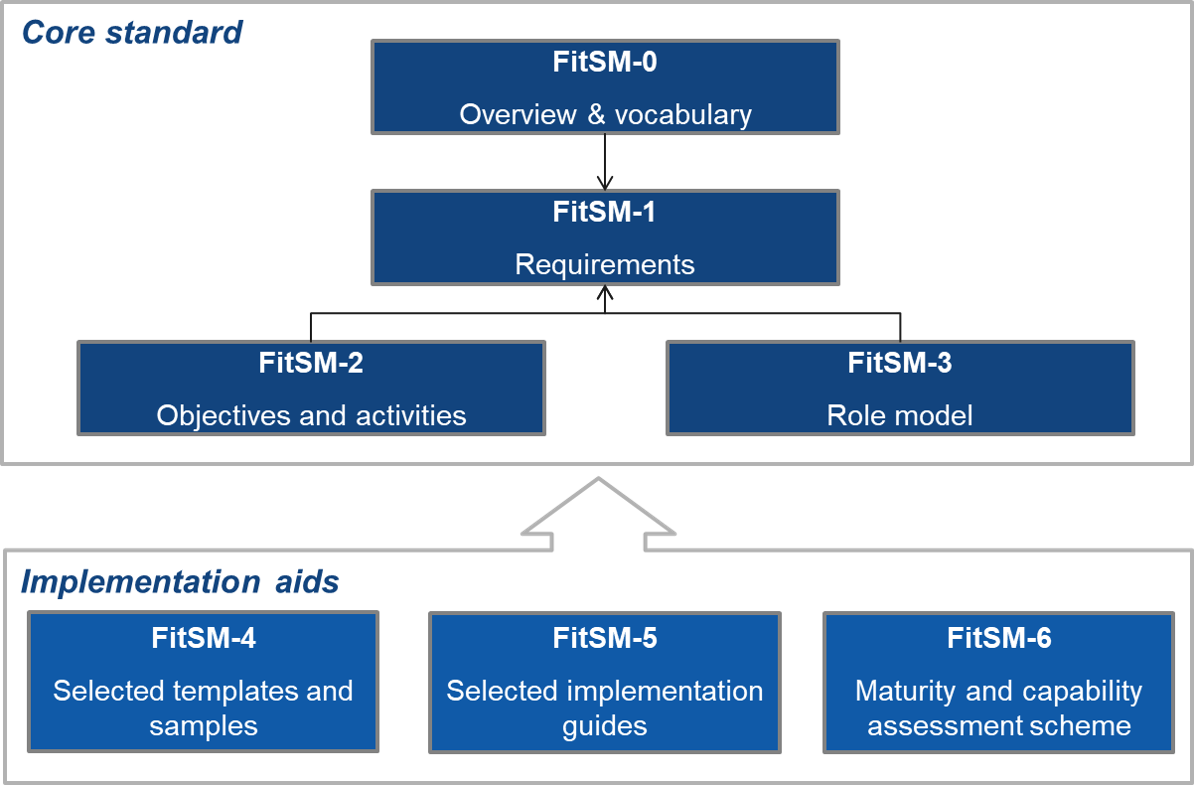
All of these components are accessible on the ITEMO site.
Advantages for IT professionals
The FitSM training scheme is suitable for professionals who want to see recognized competencies necessary for the implementation of effective IT service management processes, without the need to deepen the level of detail required by other frameworks and often of reduced applicability in their areas of activity.
A certified FitSM professional will be able to demonstrate your understanding of:
- Essential IT service management concepts and terminology.
- Purpose and structure of FitSM standards, as well as their relationship with other standards and references.
- The process framework underlying FitSM.
- The requirements defined in FitSM, allowing its adoption to be faster and more efficient.
A certified FitSM professional will also be able to:
- Support organizations in carrying out the first stage for the implementation of the complete set of ITSM processes.
- Improve the provision of IT services for organizations by using a concise standard, focused on the essential and achievable.
- Helping organizations to apply effective ITSM processes in federated environments, that is, when services are managed in cooperation with diverse organizations, without a common centralized management.
- Successfully manage standard-specific ITSM processes.
- Implement the bases of effective ITSM processes, in cases where the level of detail covered in references and standards such as ISO/IEC 20000-1 is not necessary.
- Adopt effective IT processes, with the support of checklists and a maturity assessment tool.
Advantages for organizations
With the alignment with FitSM, organizations are in a position to:
- Improve service delivery, using the concise, essential and achievable foundation achieved with FitSM.
- In the case of environments in which services are managed by different organizations that cooperate without a common centralized management ("federated environments"), the standard allows the effective application of service management processes to be achieved.
- Successful management of ITSM processes covered in FitSM.
- Adopt effective IT processes, with the support of checklists and maturity assessments.
- Take additional steps, from a solid basis, for the implementation of additional processes and / or with a greater level of detail, using standards and frameworks, such as ISO / IEC 20000-1, ITIL or Cobit.
Advantages of FitSM
The FitSM standard describes the essential bases for IT service management (ITSM):
- It is a pragmatic and achievable standard that allows effective IT service management.
- Its approach is accessible to a wide range of organizational environments, with different management structures.
- Can be implemented efficiently by organizations of any size.
- Allows you to create an effective management base for IT service management that is not only achievable, but that can be expanded when necessary using other standards and frameworks.
The choice of an essential core of requirements, objectives and activities, with a clear definition of roles to play, allows the efforts to improve the service management system to be focused, fulfilling goals and having a well-defined conclusion criterion in mind.
The FitSM standard is open source: the standard is freely available on the Itemo website and includes:
- An ITSM maturity assessment tool.
- The standard.
- Implementation guides.
- A template repository.
- Training material.
FitSM is an alternative to ITIL when an organization seeks to focus on the core disciplines essential for the management of IT services and seeks rapid implementation.
The best practices described in ITIL provide guidance for managing IT services. However, with rare exceptions, only some of the processes described are actually adopted, given the complexity and level of detail of the information made available.
FitSM can be an initial step for an organization that aims to align with the ISO/IEC 20000-1 standard, with or without the purpose of certification. FitSM includes a guide on how to use the standard to achieve compliance with the ISO/IEC 20000-1 standard.
What is FitSM?
FitSM is a de facto standard for the management of information technology services [IT].
It was created under the auspices of the European Commission, through the FedSM project. After the end of the project, the standard started to be managed by ITEMO, a non-profit organization.
FitSM is aimed at organizations that want to structure the way they manage IT, optimizing their activities and directing them to the effective delivery of IT services to customers.
FitSM allows you to create an essential basis for the management of IT services, outlining a path with beginning and end, allowing the initial assessment of the starting point and the assessment of progress whenever desired.
The logic of the FitSM standard is reflected in its six components:
